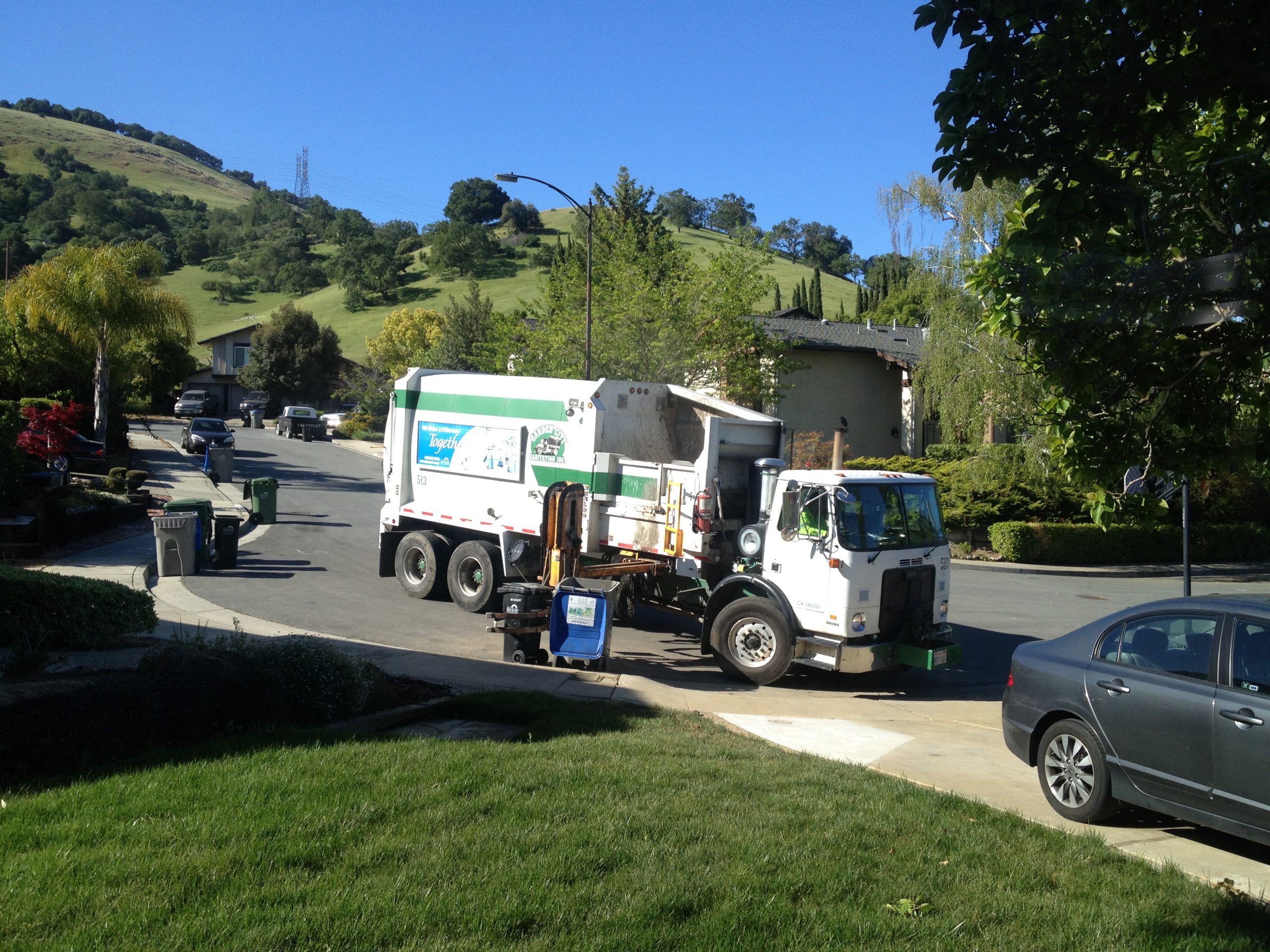
Photo: Katherine Fraser
Waste disposal teaches an important lesson on sustainability: one size doesn’t fit all. From the trucks themselves to what happens to their contents, “going green” can present unique challenges; battery power that is right for a passenger sedan doesn’t work for a garbage truck, and not all waste can be recycled or composted. However, a local project is promising some breakthroughs. The Raven SR facility, which will be built on 1.5 acres next to the composting operation at the West Contra Costa Sanitary Landfill in Richmond, will divert some incoming waste to producing hydrogen which could fuel the garbage trucks that bring it in.
For most waste haulers, the decision has been to stick with conventional diesel rather than going electric, although if renewable diesel becomes available from refineries such as the two in the Bay Area making the switch, that may be an option. However, large heavy-duty fleet vehicles are good candidates for hydrogen fuel cells, and hydrogen-fueled vehicles, including garbage trucks, are on the market. Still, until now, the shift to hydrogen has been slow. Lacking an extensive distribution system, hydrogen has often been produced by facilities dedicated to serving specific industrial customers, sometimes using carbon-intensive processes. Landfill-based hydrogen production may change the picture.
Another part of the picture that is changing is how some refuse is handled. Organic waste from retail and commercial operations must now be collected separately for composting due to a new state law. Although biowaste is a potential feedstock for renewable diesel, municipal organic waste may not be sufficiently high-volume and consistent for refinery use. Landfill lifetimes may be extended by diverting organic waste to composting, but despite improved options for biowaste, many other materials continue to go straight to the landfill due to inadequate recycling alternatives. A longer-term, more sustainable option is needed.
Raven SR is promising to address many of the environmental issues posed by municipal waste collection at its planned Richmond facility. Raven SR executives recently made a presentation to a meeting of the Contra Costa Hazardous Materials Commission, which includes a broad base of interests including industry associations. Matt Murdock, CEO of Raven SR, explained how the company would treat four to five truckloads of green waste per day with high-temperature superheated steam to create hydrogen fuel which could be used by vehicles like garbage trucks. The steam uses the moisture in the waste so additional water isn’t required.

Photo: Ray Krebs
The initial seventy tons per day is approximately 25 percent of the green waste stream for Republic Services at the Richmond site. If successful, the project could easily be scaled up to handle more of the incoming waste stream, with very little impact other than a few more trucks carrying the hydrogen.
Although this project will start by handling biowaste, the technology has been proven to work for virtually every type of waste except metal and glass, which can be separated for recycling. Because the process operates at such high temperatures, it has also been confirmed to be suitable for handling medical waste. As Murdock told the commission, “If it’s carbon-based, we can process it.”
Using municipal solid waste as a feedstock for hydrogen production is not new. Typically, this is done through gasification, which often has a problem with upsets due to an inconsistent waste stream. However, Raven’s process doesn’t burn the waste as gasification does. “There are no dioxins, furans, carcinogens, particulate matter,” said Murdock. Instead, the small quantities of waste are products such as sulfur and biocarbon that are commercially valuable.
Hydrogen production is labeled with a color palette based on process emissions; color designations range from black and gray, if energy is from fossil fuels, to blue, pink, and green. Most green hydrogen is produced by electrolysis using renewable energy. Raven SR refers to its product as “greener hydrogen”, because it has no combustion emissions and utilizes renewable energy; 80 percent of the energy needed is created by the process itself. Another waste-to-hydrogen company planning a project in California, Ways2H, claims its process produces “white hydrogen” by recycling its carbon waste back into the process as fuel, making it carbon-negative.
Raven SR’s technology can also be used to produce synthetic fuel, or syngas, which can be substituted for conventional diesel, but the Richmond facility is planned for hydrogen production. Raven SR is partnering with Hyzon Motors, which builds and sells hydrogen-powered vehicles, including medium and heavy-duty trucks. Tentative plans are to establish a hub in the Bay Area using Raven SR hydrogen to fuel Hyzon vehicle fleets. Chevron is also backing the project; the Chevron refinery in Richmond produces its own hydrogen, but the company is interested in increasing the availability of green hydrogen and building a market for hydrogen fuel.
That market already exists to some extent in the Bay Area, particularly for buses, and it is outstripping current supplies at times. According to Gabe Quinto, who represents the Contra Costa Mayor’s Conference on the Hazardous Materials Commission, “Right now there has been a shortage of hydrogen at the local hydrogen fill up stations up and down the state including Contra Costa. Winter storms and electricity brownouts in Texas have caused a shortage. Frustrated hydrogen car owners were even given regular cars during the shortage.” Quinto would welcome more locally-produced hydrogen.
The City of Richmond is acting as the lead agency to review and approve the Raven SR facility. A permit will also be needed from the Bay Area Air Quality Management District. The facility may be operational by late Fall 2022.

